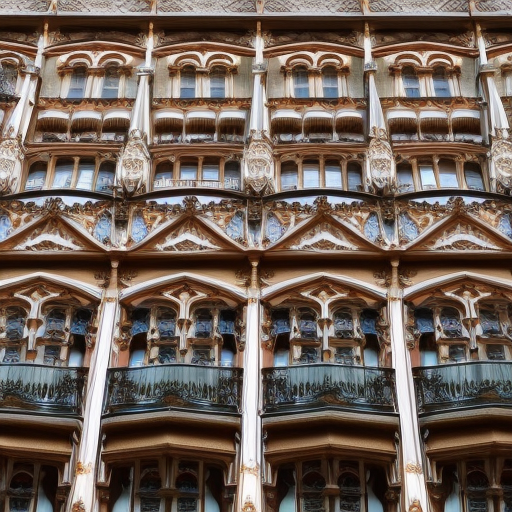Summary:
Victorian architecture refers to the architectural style that was prevalent in the United Kingdom during the reign of Queen Victoria from 1837 to 1901. It is characterized by a combination of various architectural styles, including Gothic Revival, Italianate, and Queen Anne. Victorian architecture is known for its intricate detailing, use of ornamental elements, and grandeur. This style of architecture had a significant impact on the urban landscape of the Victorian era and continues to influence modern architecture today.
Characteristics of Victorian Architecture:
- Eclecticism: Victorian architecture is characterized by its eclectic nature, combining elements from various architectural styles. This was a reflection of the era’s fascination with the past and a desire to showcase wealth and status.
- Ornamentation: Victorian buildings are known for their elaborate ornamentation, both on the exterior and interior. This includes decorative moldings, intricate carvings, and detailed ironwork.
- Steep roofs and towers: Many Victorian buildings feature steeply pitched roofs and towers, adding to their grandeur and creating a sense of verticality.
- Asymmetry: Victorian architecture often exhibits asymmetrical facades, with different elements and features on each side of the building.
- Use of materials: Victorian buildings were constructed using a variety of materials, including brick, stone, and cast iron. The use of these materials allowed for the creation of intricate detailing and ornamental features.
- Bay windows: Bay windows were a common feature in Victorian architecture, providing additional light and creating a sense of space.
- Verandas and porches: Victorian houses often had verandas or porches, which served as outdoor spaces for socializing and provided shade during hot weather.
Types of Victorian Architecture:
- Gothic Revival: This style drew inspiration from medieval Gothic architecture and was characterized by pointed arches, ribbed vaults, and decorative tracery.
- Italianate: Italianate architecture was influenced by Italian Renaissance design and featured tall, narrow windows, decorative brackets, and elaborate cornices.
- Queen Anne: Queen Anne architecture was known for its asymmetrical facades, steep roofs, and decorative details such as turrets, gables, and ornamental shingles.
- Second Empire: Second Empire architecture was influenced by French design and featured mansard roofs, dormer windows, and elaborate ironwork.
- Stick Style: The Stick Style was characterized by the use of wooden decorative elements, such as stickwork on the exterior, and often featured steep roofs and asymmetrical facades.
Influence and Legacy:
Victorian architecture had a significant impact on the urban landscape of the Victorian era. The grandeur and ornamental detailing of Victorian buildings reflected the wealth and prosperity of the time. Many Victorian buildings, such as townhouses, mansions, and public buildings, still stand today and are considered architectural landmarks. The influence of Victorian architecture can also be seen in the design of modern buildings, with elements such as bay windows, steep roofs, and ornamental detailing being incorporated into contemporary architecture. Victorian architecture continues to be appreciated for its beauty, craftsmanship, and historical significance. It serves as a reminder of the rich architectural heritage of the Victorian era and the lasting impact of this architectural style on the built environment.












